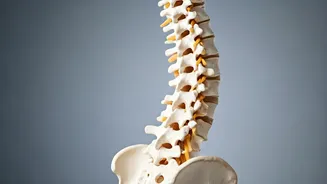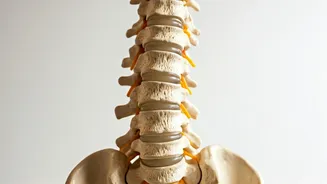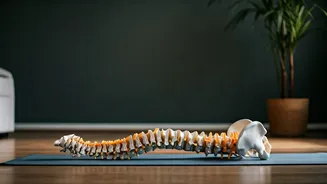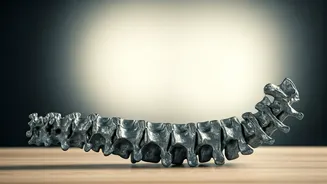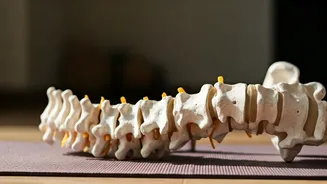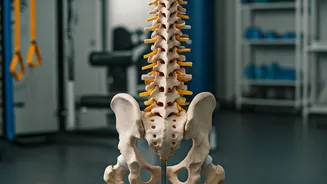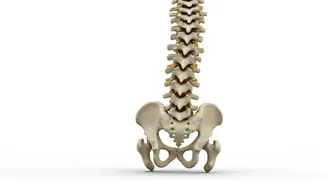Understanding Back Pain
Back pain, if ignored, can lead to serious limitations. It can greatly restrict mobility, making everyday tasks difficult. This pain can also impact productivity,
affecting work and other responsibilities. Furthermore, untreated back pain deteriorates overall quality of life. The discomfort and limitations can cause stress, frustration, and reduced enjoyment of daily activities. Regular exercise and proactive care are important to prevent these outcomes. Many people find relief through consistent, targeted exercises.
The Cat-Cow Stretch
The Cat-Cow stretch is excellent for warming up the spine and enhancing flexibility. Start on your hands and knees, ensuring your wrists are aligned under your shoulders and your knees under your hips. For the 'Cat' pose, arch your back towards the ceiling, tucking your chin to your chest while engaging your abdominal muscles. Imagine you're trying to push your spine upwards. For the 'Cow' pose, drop your belly towards the floor, lift your chest, and look up, gently arching your back. Repeat these movements, flowing smoothly between the two poses, focusing on your breath. Breathe in as you move into the Cow pose and exhale as you move into the Cat pose. This exercise not only increases spinal mobility but also promotes relaxation and reduces tension.
Pelvic Tilts Explained
Pelvic tilts are useful for strengthening the core muscles that support the lower back. To begin, lie on your back with your knees bent and feet flat on the floor. Make sure your feet are hip-width apart and your arms are relaxed at your sides. The exercise involves a controlled rocking motion of your pelvis. First, tilt your pelvis, pressing your lower back into the floor and engaging your abdominal muscles. Think of flattening your lower back against the ground. Then, tilt your pelvis in the opposite direction, gently arching your lower back away from the floor. Concentrate on the movement coming from the pelvis, not from the back itself. Doing this exercise regularly strengthens the core, which gives better spinal support.
Knee-to-Chest Stretch
The knee-to-chest stretch effectively relieves lower back tension. Lie on your back with your knees bent and feet flat on the floor. Gently bring one knee towards your chest, clasping your hands around your shin. Hold your knee as close as is comfortable and feel the stretch in your lower back. Hold the position for around 30 seconds, then slowly lower your leg. Repeat the exercise with the other leg, and then, if comfortable, bring both knees to your chest simultaneously. This stretch gently elongates the spine and reduces compression, providing quick relief from pain. Remember to breathe deeply throughout the process to maximize the benefits and help your muscles relax fully.
Bird Dog Exercise
The Bird Dog exercise enhances core stability and reduces back pain. Start on your hands and knees, keeping your back straight and your core engaged. Extend your right arm forward while simultaneously extending your left leg backward, keeping them parallel to the floor. Focus on maintaining balance and preventing your hips from rotating. Hold the position for a few seconds, then slowly return to the starting position. Repeat the exercise on the other side. This exercise improves core strength, crucial for supporting the spine and reducing strain. Regular performance promotes improved posture and better overall back health. Maintaining a neutral spine throughout the exercise is important.
Piriformis Muscle Stretch
The Piriformis muscle stretch specifically targets the piriformis muscle, which can contribute to back pain and sciatica. Lie on your back with your knees bent and feet flat on the floor. Cross your right ankle over your left knee. Gently pull your left thigh towards your chest, feeling the stretch in your right hip and buttock. Hold the position for around 30 seconds, then slowly release. Repeat the exercise on the other side. This stretch can alleviate pressure on the sciatic nerve, which often causes back pain. Performing this stretch regularly can greatly reduce pain and discomfort associated with tight muscles.
Important Considerations
Always consult a doctor before starting any new exercise routine, especially if you have existing back pain or medical conditions. Listen to your body and never push yourself beyond your comfort level. If you feel any sharp pain, stop immediately. Consistency is key; aim to perform these exercises regularly for optimal results. Incorporating these exercises into a daily routine can contribute to the long-term well-being of the back and can prevent injury. Combining the exercises with proper posture and ergonomic practices enhances their effectiveness. Moreover, combining these exercises with a balanced diet, proper hydration, and restful sleep is also critical for supporting overall spinal health and pain management.
